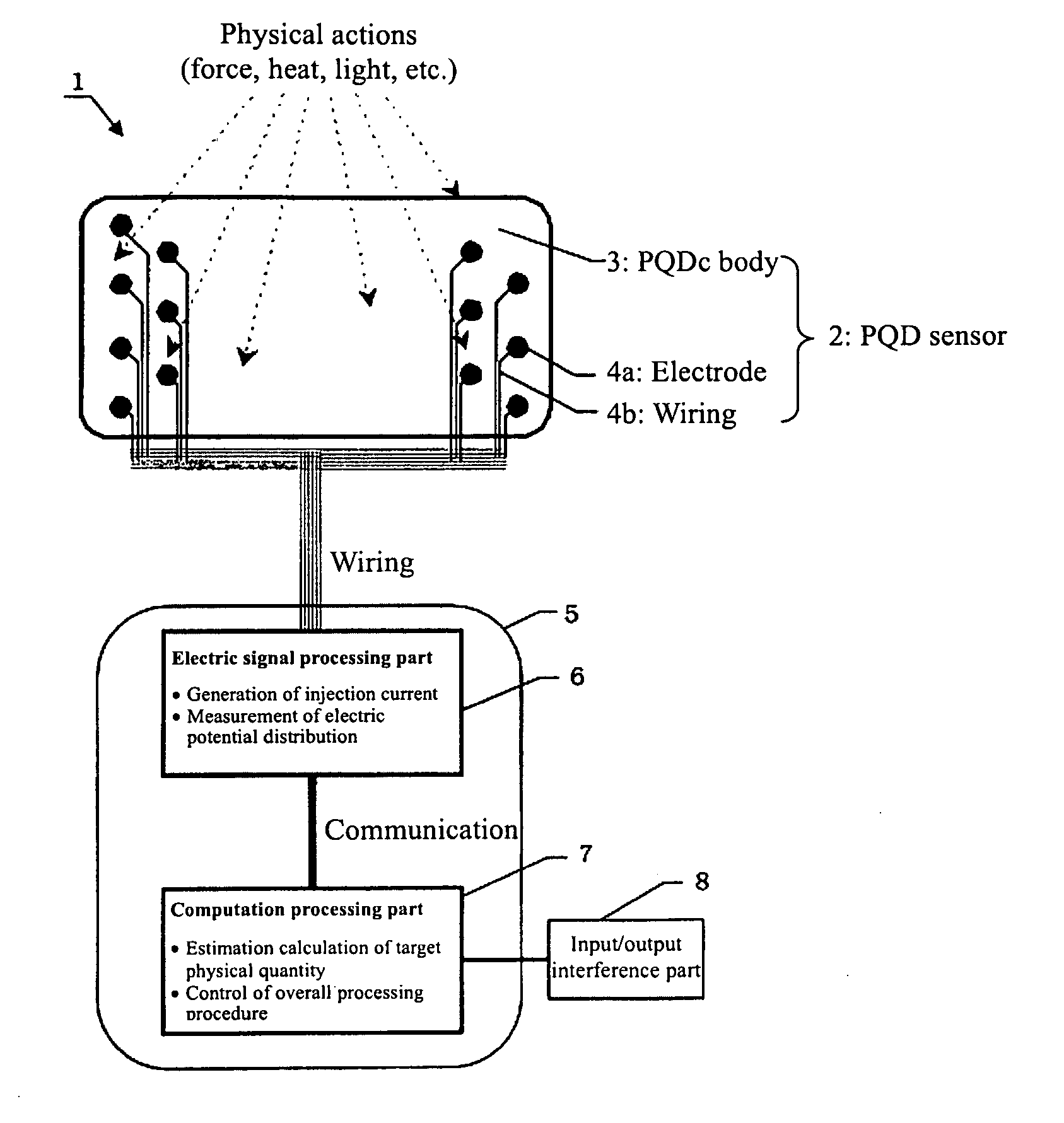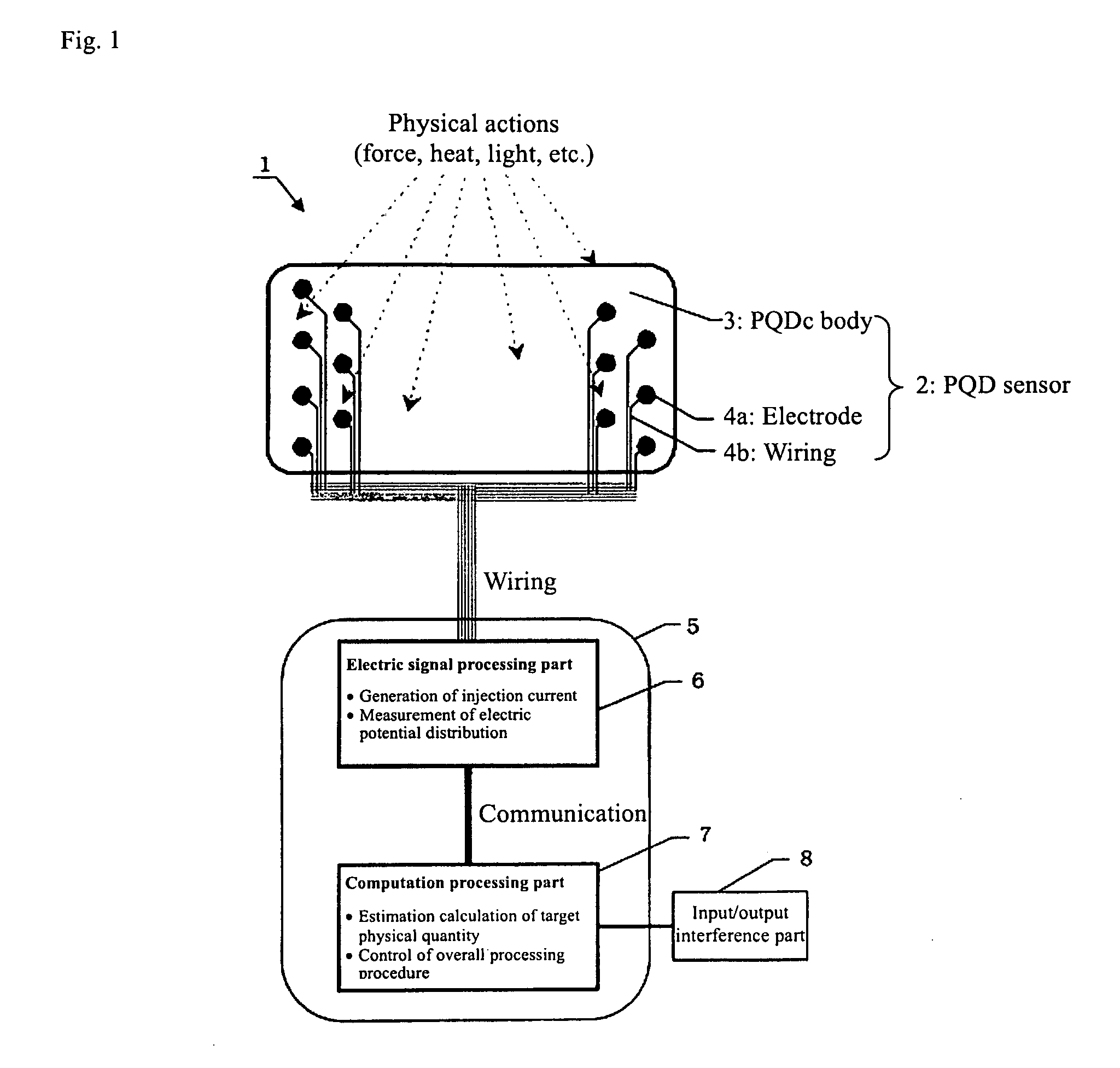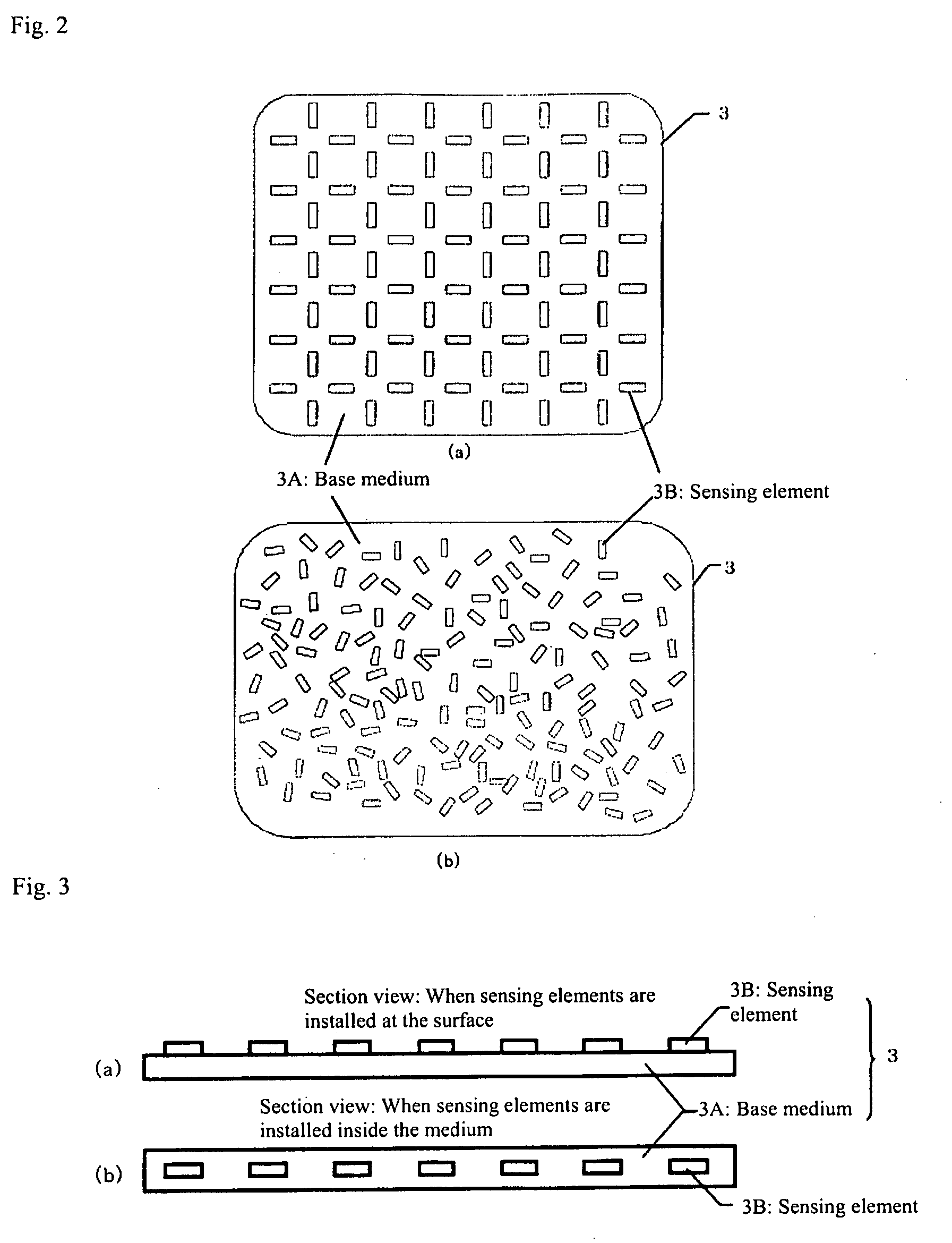Method for measuring physical quantity distribution and measurement system using sensor for physical quantity distribution
a technology of physical quantity distribution and measurement system, applied in the direction of force/torque/work measurement apparatus, liquid/fluent solid measurement, using mechanical means, etc., can solve the problems of low reliability of sensors, difficult to cover these regions, and pqd sensors offering high stretchability and flexibility have not been realized so far, so as to improve estimation accuracy, the effect of excellent reliability
- Summary
- Abstract
- Description
- Claims
- Application Information
AI Technical Summary
Benefits of technology
Problems solved by technology
Method used
Image
Examples
application examples
[0399]A stretch distribution sensor can be realized according to the present invention, but this stretch distribution sensor can be utilized in various ways other than simply to detect pinching, rubbing, etc. For example, attaching such stretch distribution sensor on a human or robot's elbow, shoulder, etc., causes the stretch condition of the sensor to change according to the movement of the joint, and therefore the joint angle can be measured from the stretch quantity. Also, use of a stretch distribution sensor at the shoulder where multiple joint axes are concentrated at a single point allows for simultaneous measurement of angles of multiple axes using a single sensor. In addition, a stretch distribution sensor can also be used to measure the torso whose measurement has traditionally been difficult because of its smooth surface and diverse, complex bending modes, which is different from the shoulder, elbow and other joints, for the reason that such sensor conforms to the complex...
example 1
Pressure Distribution Sensor
[0401]An example of a pressure distribution sensor that stretches dynamically is given.
[0402]In this example, a pressure distribution sensor is mounted around the elbow joint of a humanoid robot for the purpose of measuring the pressure distribution around the elbow joint. When the elbow joint moves, the stretch condition of the pressure distribution sensor also changes.
[0403]FIG. 29 is an explanation drawing showing an overall constitution of the pressure distribution sensor and a condition in which the pressure distribution sensor is mounted on the robot's elbow joint.
[0404]FIG. 30 (a) shows a condition where the pressure distribution sensor is not mounted on the elbow joint, while FIG. 30 (b) explains how the stretch condition of the pressure distribution sensor changes when the elbow joint is bent with the pressure distribution sensor mounted on it.
[0405]As shown in FIG. 30, large stretching occurs around the elbow when the elbow joint is bent. Althou...
example
Implementation of Stretchable Contact Distribution Sensor Around Elbow Joint
[0473]Since the surface area around a robot's joint changes significantly as the joint angle changes, conventional non-stretchable tactile sensors cannot sufficiently cover regions near joints. Accordingly, it has been very difficult to measure tactile sensing condition around the elbow, knee, etc. Using a stretchable tactile distribution sensor conforming to the present invention, however, tactile sensing near joints, which has been difficult, becomes possible. The conductive knitted fabric described in “Example: Pressure distribution sensor on complex curved surface using conductive knitted fabric” provides stretchability of 150% or more, just like general knitted fabrics, and thus can be mounted around moving joints. In this example, a stretchable rectangular conductive knitted fabric was installed on the elbow joint based on the concept illustrated in FIG. 30.
[0474]Next, a contact distribution sensor usi...
PUM
| Property | Measurement | Unit |
|---|---|---|
| weight | aaaaa | aaaaa |
| electric potentials | aaaaa | aaaaa |
| electric potentials | aaaaa | aaaaa |
Abstract
Description
Claims
Application Information
 Login to View More
Login to View More - R&D
- Intellectual Property
- Life Sciences
- Materials
- Tech Scout
- Unparalleled Data Quality
- Higher Quality Content
- 60% Fewer Hallucinations
Browse by: Latest US Patents, China's latest patents, Technical Efficacy Thesaurus, Application Domain, Technology Topic, Popular Technical Reports.
© 2025 PatSnap. All rights reserved.Legal|Privacy policy|Modern Slavery Act Transparency Statement|Sitemap|About US| Contact US: help@patsnap.com



